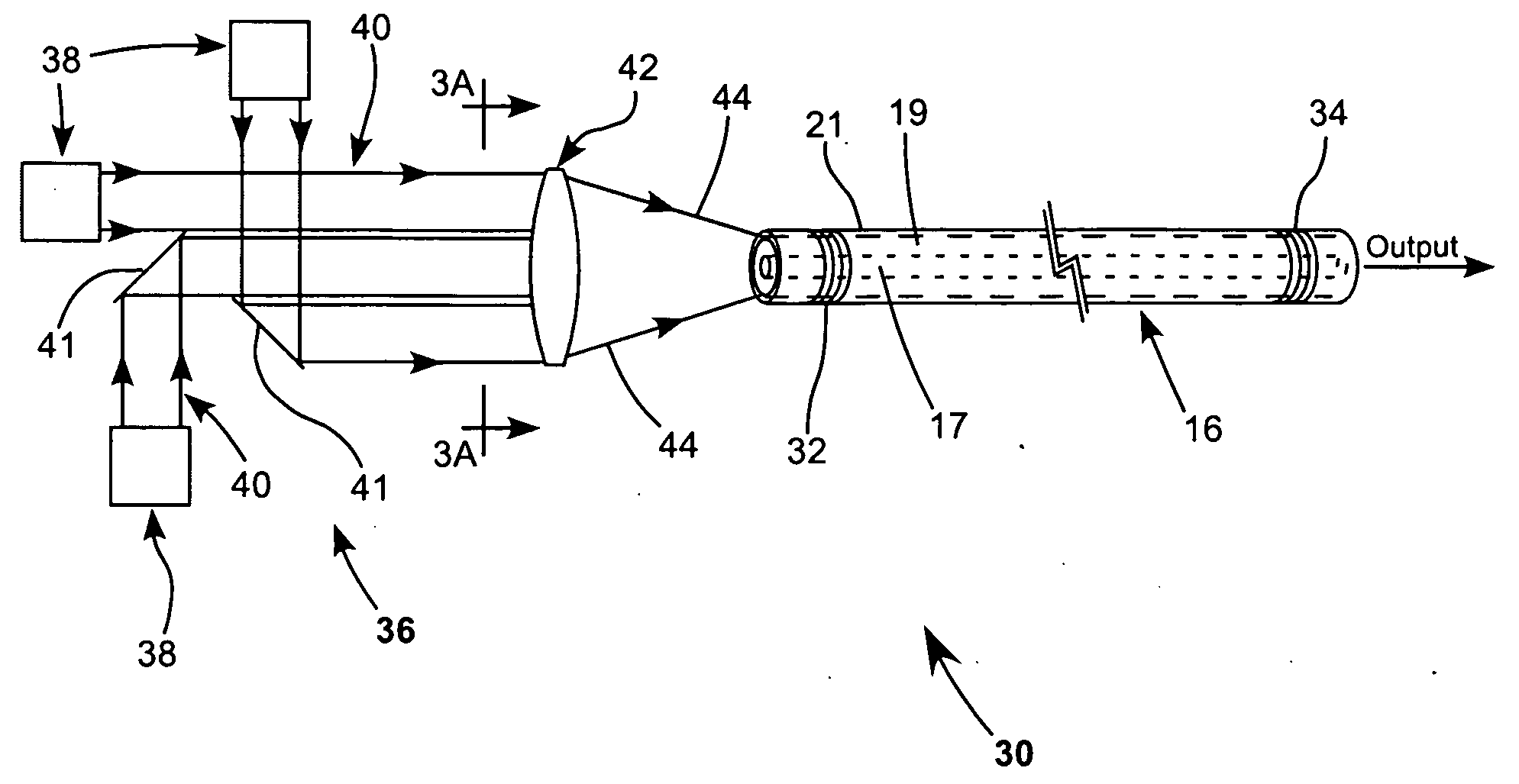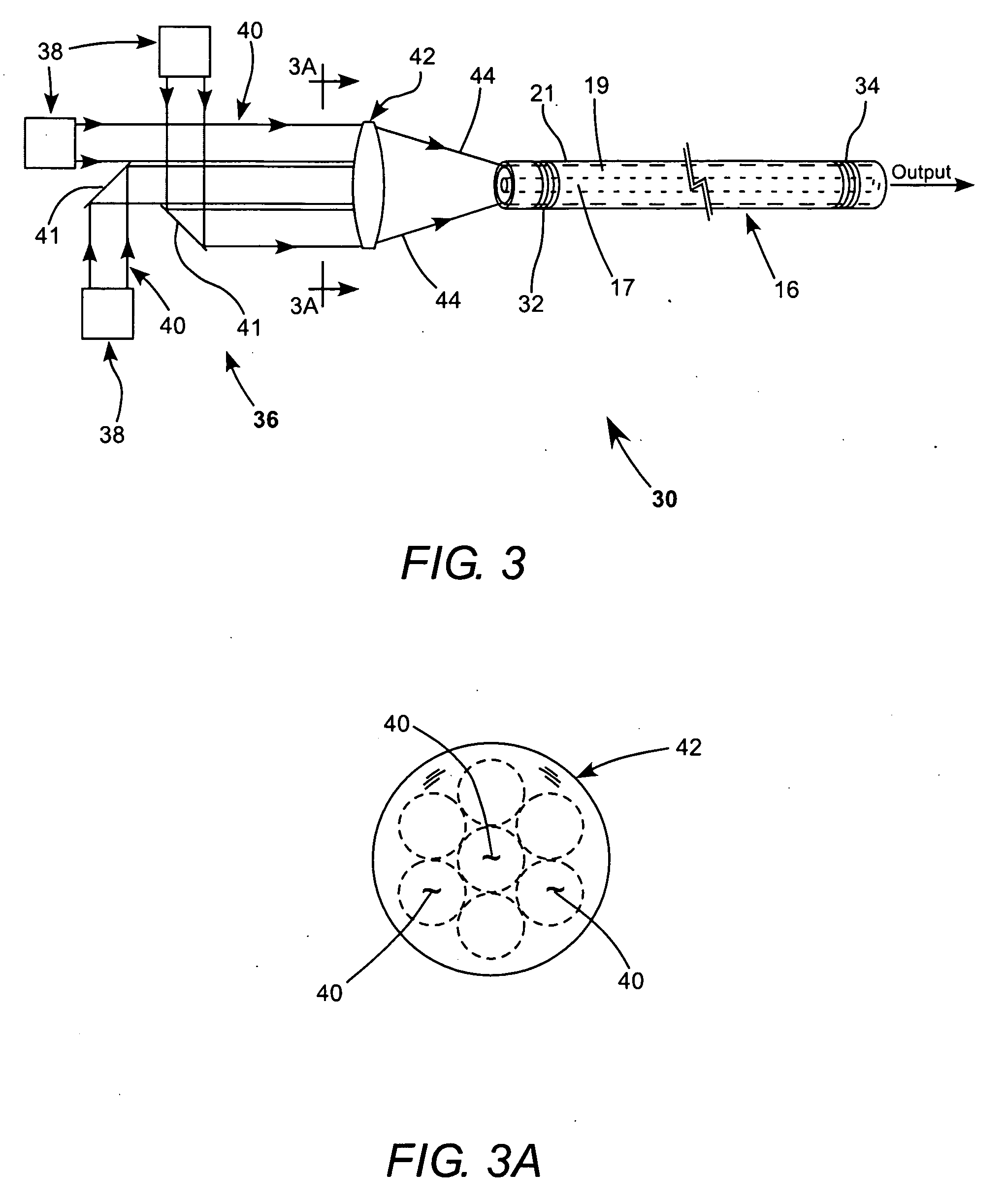Ops-laser pumped fiber-laser
a technology of fiber-laser and fiber-amplifiers, which is applied in the direction of laser optical resonator construction, laser details, basic electric elements, etc., can solve the problems of reducing efficiency, reducing absorption efficiency, and excessive heating, and achieves short pump-radiation absorption length, small cladding diameter, and low brightness
- Summary
- Abstract
- Description
- Claims
- Application Information
AI Technical Summary
Benefits of technology
Problems solved by technology
Method used
Image
Examples
Embodiment Construction
[0034]Referring again to the drawings, wherein like components are designated by like reference numerals, FIG. 3 and FIG. 3A schematically illustrate one preferred embodiment 30 of an OPS-laser pumped fiber-laser in accordance with the present invention. Laser 30 includes a “double-clad” optical gain-fiber 16 having a doped core 17 surrounded by an inner core 19 which is surrounded by an outer core 21. A laser resonator is formed in the gain-fiber between fiber Bragg gratings (FBGs) 32 and 34.
[0035]Optical pump radiation is provided by a pump module 36 including plurality of external-cavity, surface-emitting, semiconductor lasers (OPS-lasers) 38. Each laser delivers a beam of radiation 40 preferably in a single lateral mode or at least a “low-M2” (for example M241, to a positive lens 42. Radiation from all of the beams is focused by lens 42, as indicated by converging rays 40, into inner cladding 19 of gain-fiber 16, with a small portion, of course, directed into core 17. The beams ...
PUM
 Login to View More
Login to View More Abstract
Description
Claims
Application Information
 Login to View More
Login to View More - R&D
- Intellectual Property
- Life Sciences
- Materials
- Tech Scout
- Unparalleled Data Quality
- Higher Quality Content
- 60% Fewer Hallucinations
Browse by: Latest US Patents, China's latest patents, Technical Efficacy Thesaurus, Application Domain, Technology Topic, Popular Technical Reports.
© 2025 PatSnap. All rights reserved.Legal|Privacy policy|Modern Slavery Act Transparency Statement|Sitemap|About US| Contact US: help@patsnap.com



